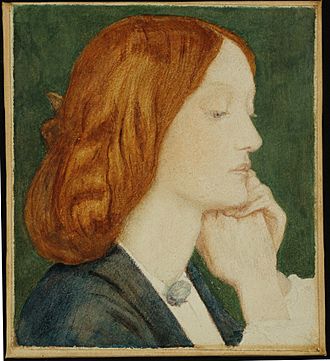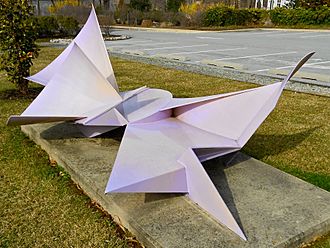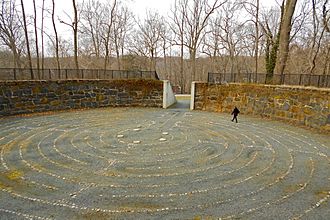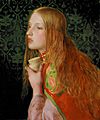Delaware Art Museum facts for kids
 |
|
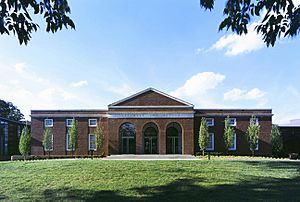
Exterior view
|
|
| Established | 1912 |
|---|---|
| Location | 2301 Kentmere Parkway, Wilmington, Delaware 19806, USA 302.571.9590 |
| Type | Art museum |
| Public transit access | |
The Delaware Art Museum is an art museum located in Wilmington, Delaware. It has a huge collection of over 12,000 art pieces! The museum started in 1912 to honor a famous artist named Howard Pyle.
The museum's collection mainly focuses on American art and illustrations from the 1800s to today. It also has a special collection of art from a British art group called the Pre-Raphaelite Brotherhood, which was active in the mid-1800s.
The museum building was made bigger and updated in 2005. It now includes a large 9-acre Sculpture Park, a library, art classes, a special area for kids to learn, a cafe, and a museum shop.
Contents
History of the Museum
The Delaware Art Museum began in 1912 as the Wilmington Society of the Fine Arts (WSFA). This happened after the death of Howard Pyle, a very well-known American illustrator. The museum bought over 100 paintings, drawings, and prints from his wife to start its collection. Pyle had many students and supporters in Wilmington who wanted to remember him through this museum.
Early Years and Growth
From 1912 to 1922, the WSFA did not have its own building. It held art shows every year at the Hotel duPont. These shows featured Pyle's work and art by his students and other Delaware artists. The collection of Pyle's art grew even more thanks to Willard S. Morse, who gave many of Pyle's drawings to the museum. In 1922, the WSFA rented rooms in a building in downtown Wilmington.
Expanding the Building
In 2005, the museum made its building twice as big. This big project cost a lot of money. Later, during a financial downturn, the museum had to sell some art from its collection to help pay off loans and improve its finances.
Bancroft Art Collection
In 1931, the family of Samuel Bancroft offered to donate his amazing collection of Pre-Raphaelite artworks to the museum. They also offered 11 acres of land for a new museum building. Bancroft's collection is the largest and most important group of British Pre-Raphaelite art in the United States.
Even though it was during the Great Depression, people raised enough money for a new building. This new building opened in 1938. At that time, the museum's name changed to the Delaware Art Center.
Museum Expansions and New Name
The Delaware Art Center moved into its new building in June 1938. The Wilmington Academy of Fine Arts used the ground floor for art classes. During World War II, fewer people visited the museum because of gas rationing. In 1943, the Wilmington Academy of Fine Arts joined with the Delaware Art Center, which helped create its education department. This department grew very quickly.
More Space for Art and Learning
Because the art programs grew so much after World War II, the Delaware Art Center needed to expand again by 1956. New art studios and training rooms were added. In 1970, the building was updated again with air conditioning and humidity control to protect the art. In 1972, the museum received a special award from the American Alliance of Museums. Soon after, the Delaware Art Center changed its name to the Delaware Art Museum. This new name showed how much its art collections and programs had grown.
Another big expansion happened in 1987, which doubled the museum's size. But because more and more people visited and joined programs, another expansion was completed in 2005.
Art Collections to Explore
The Delaware Art Museum has many different types of art. Most of its collections are from American illustration and art from the late 1800s and early 1900s. It also has a very important collection of art from the Pre-Raphaelite Brotherhood.
The museum's main collections started with the works of Howard Pyle and his students, like N.C. Wyeth, Frank Schoonover, and Stanley Arthurs. Helen Farr Sloan, who was married to artist John French Sloan, also gave over 5,000 art pieces to the museum starting in 1961.
Since the 1970s, the museum has also added art by modern artists such as Jacob Lawrence, Louise Nevelson, and Jim Dine.
Pre-Raphaelite Art Collection
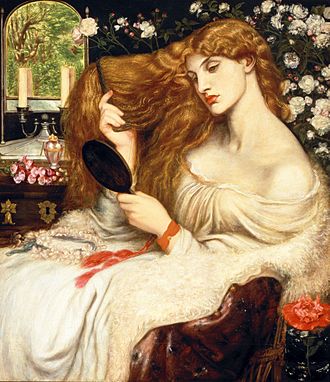
This collection comes from Samuel and Mary R. Bancroft. It includes beautiful works by artists like:
- Ford Madox Brown
- Edward Burne-Jones
- Dante Gabriel Rossetti
- William Holman Hunt
- John Everett Millais
- Elizabeth Siddal
19th Century American Art
This section features American art from the 1800s, with works by artists such as:
- Frederic Edwin Church
- Winslow Homer
- George Inness
- Raphaelle Peale
American Illustration Art
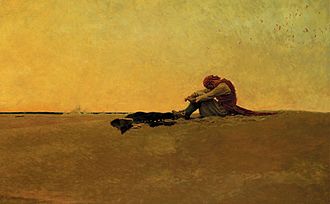
This collection highlights the "Golden Age of Illustration."
Howard Pyle and His Students
- Howard Pyle
- Frank Schoonover
- N.C. Wyeth
Other American Illustrators
- Charles Dana Gibson
- J. C. Leyendecker
- Thomas Nast
Early 20th Century American Art
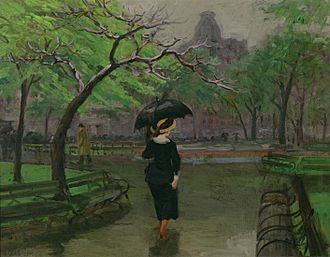
This collection includes art from the early 1900s, including works by artists from the Ashcan School like:
- John Sloan
- Robert Henri
- George Luks
Other artists in this collection include:
Post-World War II American Art
This collection features American art created after World War II, with works by artists such as:
Helen Farr Sloan Library
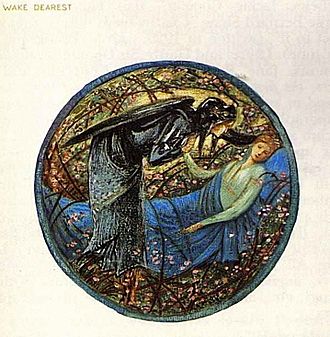
The museum has a special library named after Helen Farr Sloan. It opened in 1985 and combines several important collections. It has over 30,000 books and many personal papers and photos related to artists like John French Sloan, Samuel Bancroft, Jr., and Howard Pyle. The library also has a copy of The Flower Book by Edward Burne-Jones.
Copeland Sculpture Garden
The museum has a beautiful 9-acre sculpture garden behind the building. It features nine large sculptures and an old reservoir that has been turned into a labyrinth.
Some of the cool sculptures you can see include the 13-foot-tall bronze Crying Giant by Tom Otterness. There's also Three Rectangles Horizontal Jointed Gyratory III by George Rickey, which moves in the wind. Another interesting piece is a sound sculpture by Joe Moss that changes sounds from nearby.
Special Exhibitions
The museum hosts about ten special art shows each year. These shows feature different topics, from well-known modern artists to historical folk art from Delaware. Past exhibitions have included works by artists like Maxfield Parrish, Frank Schoonover, and John Sloan. They have also shown art from other museums and collections.
Art Classes and Programs
The museum offers about 100 different programs each year. These include longer classes that last for several weeks and shorter workshops that are just one day long. They also have open studios where you can create art. Special classes are available for adults, teenagers, and children. You can learn things like drawing, painting, photography, jewelry making, and ceramics.
See also
Images for kids
-
Mary Magdalene by Frederick Sandys, c. 1858–1860
-
Who shall be captain? a 1911 painting by Howard Pyle at the museum
-
Love's Messenger, 1885, by Marie Spartali Stillman


